
An expanding bar is a component used to support and maintain the proper spacing between conductors on the transmission lines. Expanding bar is also known as spacer dampers of spacer devices. It helps ensure a safe and efficient operation of high-voltage electrical transmission systems. It also helps reduce electrical arcing and conductor contact which can lead to power outages and safety hazards. The expanding bars should meet the demanding industry standards set by Southeast Asian regulatory bodies. Expanding bars are from materials that resists corrosion, rust and heat. These materials include aluminum, steel or composite materials. The common types include helical spacer damper, fiber optic, vibration damper and compression-type spacer damper. They find use in various applications such as transmission lines, distribution lines, renewable energy and smart grids among others.
Key features of expanding bar
Expanding bars have various features that help ensure the safe and reliable operation of electrical power lines. These unique features make the key components of any electrical system project in the industry. The following are the key features of the expanding bar.
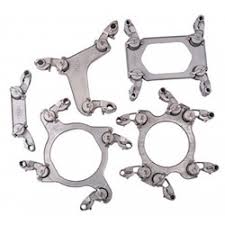
- Thermal expansion components – they spacers accommodate the expansion and contraction of electrical conductors. This is mainly due to temperature variations. This factor helps them maintain the required spacing between conductors.
- Adaptability – they are able to fit various conductor configurations in various applications. These include single conductors, bundled conductors and multiple-phase conductors.
- Material – they are from materials with suitable thermal expansion properties. These materials includes aluminum, steel or composite.
- Conductor separation – the bars help maintain a consistent separation distance between electrical conductors.
- Vibration damping – some dampers have vibration-damping features. These help them mitigate galloping and aeolian vibrations.
- Corrosion resistance – the expanding bars mainly work in outdoor conditions. They should have corrosion-resistant coatings to withstand exposure to moisture, UV radiation and other factors.
- Ease of installation – the bars can attach to the conductors which makes them useful for both power transmission and data communications applications.
- Dual purpose design – some of the dampers may have dual purposes. This includes fiber optic cables for communication and electrical conductors.
- Reliability – the ability to withstand mechanical stresses, temperature extremes and other challenging conditions ensures proper functionality.
Selection and installation of expanding bar
The selection process of expanding bars should ensure the safe and reliable operation of the power line. It involves considering various factors such as conductor type and configuration, conductor size, thermal expansion, environmental conditions and costs. The installation process should ensure the safe and reliable transmission of electricity. The following is a basic installation process of the expanding bars.
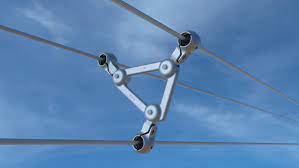
- Preparation – gather all the necessary tools required for the installation. Ensure the work area is safe and clear of any hazards. Use suitable personal protective equipment including safety helmets, gloves and safety harnesses.
- Conductor spacing – verify the conductor spacing required for your system’s design.
- Positioning – determine the suitable location along the conductor where the expanding bar needs to install. Place the expanding bars on the conductors at the desired spacing.
- Attach clamps or fasteners – use the suitable clamps provided by the manufacturer to secure the expanding bars. Use a torque wrench to ensure proper tightening to the specified settings.
- Alignment – verify that the expanding bars correctly align with the conductors. They should the maintain desired separation distance.
- Inspection – conduct a visual inspection of the entire installation. Ensure that the expanding bars are securely attached and aligned.
- Documentation – keep detailed records of the installation including location, date and other observations.
- Cleanup – remove the tools, equipment or debris from the work area and ensure the site is clean and safe.
Maintenance and inspection of expanding bar
Proper maintenance and inspection of expanding bars helps to ensure continued functionality of the system. It also helps prolong service life, prevent electrical faults and ensure continued reliability. The following is a basic maintenance and inspection guide for expanding bars in Southeast Asia.
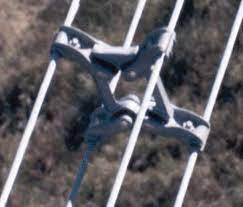
- Conduct regular inspection schedule for the expanding bars to ensure continued performance. The frequency depends on factors such as environmental conditions, age of equipment and regulatory requirements.
- Visually inspect the expanding bars to look for signs of wear, damage or corrosion. Look for missing fasteners, clamps or other attachments.
- Ensure the expanding bars align correctly with the conductors and maintains the desired spacing.
- Inspect the expanding bars for signs of corrosion or degradation. Follow the suitable corrosion control measures.
- Check the tightness of the clamps to ensure they are securely attached to the conductors. Ensure it also maintains the specified torque settings.
- Clean the bars to remove dirt, dust or contaminants using the appropriate methods and materials.
- Replace the damaged clamps or fasteners to maintain the integrity of the expanding bar.
- Keep detailed records of all inspections, maintenance activities and any repairs or replacements. This includes dates, findings, actions taken and condition of the expanding bars.
Comparative analysis of expanding bars in Southeast Asia
A comparative analysis includes comparing different designs and types of expanding bars in the region. There are also other factors that influence the analysis such as environmental conditions, regulatory standards and other challenges. Additionally, the choice of the expanding bar depends on the specific regional conditions. This helps to ensure the reliable and efficient operation of power transmission systems. The following are the common factors to include in a comparative analysis in Southeast Asia.
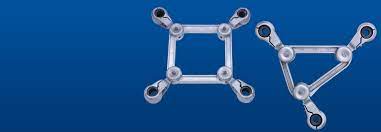
- Environmental conditions – the region consists of conditions such as tropical climates and coastal areas. This requires the use of expanding bars that are able to withstand high temperatures, humidity and frequent rain. They should also have corrosion-resistant coatings to ensure longevity.
- Regulatory standards – there are various regional and local standards that affect the use of expanding bars in the region. The countries are looking for ways to harmonize their standards and regulations. This is to promote cross-border power transmission between the Southeast Asian countries.
- Temperature variations – the dampers should be capable of accommodating the temperature-induced expansion and contraction of conductors in various environments.
- Integration with fiber optics – expanding bars integration allows for both electrical transmission and data communication along the power lines.
- Grid expansion – the rapid urbanization leads to the expansion and modernization of power grids. Expanding bars helps to ensure efficient and reliable power transmission.
- Economic considerations – expanding bars are cost effective for utilities and governments. This helps to balance infrastructure development and budget considerations.
- Ease of maintenance – expanding bars should be easy to maintain in the diverse climate and locations of Southeast Asia.
Certifications and standards in Southeast Asia
There are various standards and regulations in Southeast Asia that govern the use of expanding bars. These standards and regulations help ensure the expanding bars meet the necessary quality and safety requirements of the project. Additionally, it is advisable to consult with relevant local authorities, utilities and standards to ensure compliance with standards. The following are the common standards and certifications related to expanding bars in Southeast Asia.
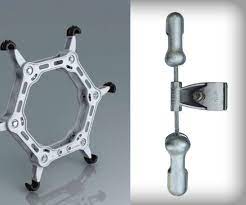
- IEC standards – this standard covers the requirements for composite insulators. This may include end fittings for use in overhead lines and distribution systems.
- Country-specific standards – each country has their own rules and standards governing the use of expanding bars.
- ASEAN certification scheme – ASEAN countries intend to harmonize electrical and electronic equipment standards.
- ISO certification – these are relevant to the manufacturers of expanding bars. They help to ensure consistent quality and environmental responsibility of the products.
- Product certification marks – these certification marks are for the products that comply with relevant standards specific to the region.
- Environmental compliance – the bars should comply with the environmental regulations and standards relevant to the region.
Regional market for expanding bars in Southeast Asia
There are various factors that influence the regional market for expanding bars in Southeast Asia. The increased demand for reliable power transmission and distribution systems also affects the market for the expanding bars. The following are the key factors and trends in the regional market for expanding bars.
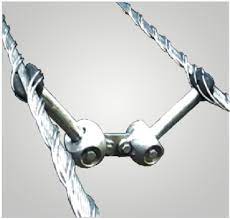
- Interconnection projects – the interconnection and cross-border connections help to enhance regional energy cooperation. These applications require expanding bars to maintain conductor spacing and ensure reliable power transmission.
- High voltage transmission – expanding bars help to transport power efficiently in high-voltage transmission lines.
- Vibration control – some expanding bars have vibration-damping features to help maintain line stability and safety.
- Public and private investment – investments in power infrastructure development contributes to the demand for expanding bars.
- Fiber optic integration – integration for fiber optic cable help to improve communication infrastructure. This hence leads to the increased demand for expanding bars.
- Smart grid development – implementing smart grid technologies requires the use of expanding bars. They help to accommodate extra equipment and sensors for smart grid applications.
Frequently asked questions
What is an expanding bar and its use in transmission lines?
This is a device used to maintain the proper spacing between electrical conductors and prevent conductor contact. This helps to ensure safe and reliable power transmission.
What types of expanding bars work in Southeast Asia?
Southeast Asia has diverse weather conditions to consider when selecting the expanding bars. Corrosion-resistant materials and vibration damping features help in areas with topical climates, coastal areas and wind-induced vibrations.
